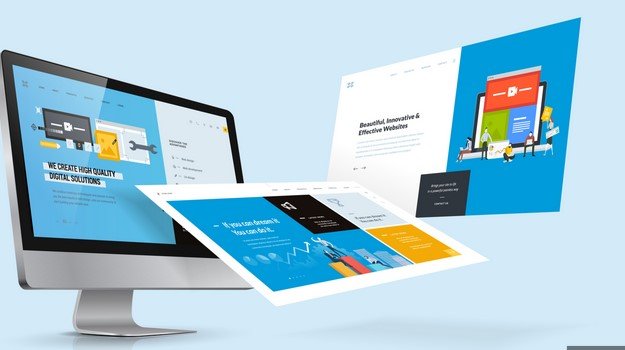The Role of SEO in Effective Web Designing
In the digital age, the success of a website depends not only on its design but also on how visible it is to search engines. Search Engine Optimization (SEO) plays a crucial role in ensuring that a website ranks well on search engine results pages (SERPs), driving organic traffic and improving visibility. When integrated into the web design process, SEO can enhance user experience, increase traffic, and boost conversion rates. In this post, we will explore the vital role SEO plays in effective web designing and why designers need to consider it from the start.

1. SEO and Site Structure
A solid website structure is one of the most important elements in both SEO and web design. Search engines rely on an organized, logical structure to crawl and index content efficiently. For web designers, creating a clear hierarchy with proper navigation is essential. This involves organizing content into categories and subcategories that are easy for both users and search engines to follow. A well-structured site helps improve user experience and ensures that search engine bots can crawl and index the pages correctly, which leads to better rankings on search results.
2. Mobile-Friendly Design and SEO
In today’s mobile-driven world, having a mobile-friendly website is a necessity for both SEO and web design. Google and other search engines prioritize mobile-first indexing, meaning they rank mobile versions of websites first. Web designers need to ensure that websites are responsive and provide a seamless experience across various devices. By optimizing design elements for mobile users, designers help improve user experience, which in turn can enhance SEO performance. A mobile-friendly website ensures that users can easily browse, purchase, or interact with the site, leading to higher engagement and lower bounce rates.
3. Page Speed Optimization for Better SEO
Page speed is an essential factor for both SEO and web design. Slow-loading pages can harm user experience, causing frustration and increasing bounce rates. Google considers page speed a ranking factor, so web designers must optimize websites for fast loading times. This can be achieved by compressing images, using caching methods, and optimizing code. A fast website not only improves SEO by boosting rankings but also enhances the overall user experience, which is critical for retaining visitors and encouraging them to convert.
4. Optimizing On-Page Elements
On-page SEO elements like title tags, meta descriptions, headers, and image alt texts are vital components of both web design and SEO. These elements provide context to search engines and help them understand what the page is about. A well-optimized title tag and meta description can improve click-through rates (CTR) from search engine results, while proper header tags (H1, H2, H3) organize the content for better readability and search engine understanding. Image alt text helps search engines index images, making them discoverable in image search results. A web designer should integrate these SEO elements during the design process to ensure maximum visibility and usability.
5. User Experience and SEO Synergy
User experience (UX) and SEO are closely tied. Search engines like Google consider UX signals, such as time spent on site, bounce rate, and interactions with content, when determining search rankings. A website with a clean, easy-to-navigate design leads to a better user experience, which can positively impact SEO. Features like clear calls-to-action, easy navigation, fast-loading pages, and mobile optimization all contribute to an improved user experience and better SEO. A focus on both UX and SEO ensures that users have a positive experience while also helping the site rank higher in search results.
Conclusion
SEO plays an essential role in effective web designing. By focusing on site structure, mobile optimization, page speed, on-page elements, and user experience, designers can create websites that are both visually appealing and search engine-friendly. Integrating SEO best practices into the design process from the start not only enhances the user experience but also helps drive organic traffic and boost rankings. Successful web design is about more than just creating a beautiful website—it’s about creating a site that performs well on search engines and provides value to users.



